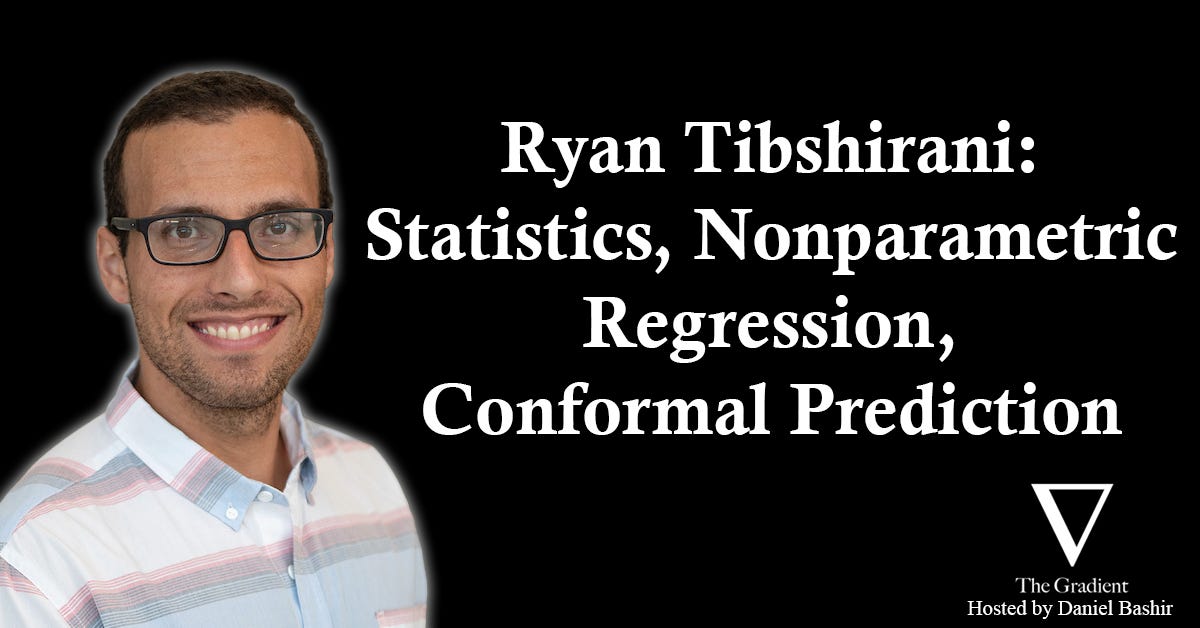Episode 121
I spoke with Professor Ryan Tibshirani about:
Differences between the ML and statistics communities in scholarship, terminology, and other areas.
Trend filtering
Why you can’t just use garbage prediction functions when doing conformal prediction
Ryan is a Professor in the Department of Statistics at UC Berkeley. He is also a Principal Investigator in the Delphi group. From 2011-2022, he was a faculty member in Statistics and Machine Learning at Carnegie Mellon University. From 2007-2011, he did his Ph.D. in Statistics at Stanford University.
Reach me at editor@thegradient.pub for feedback, ideas, guest suggestions.
The Gradient Podcast on: Apple Podcasts | Spotify | Pocket Casts | RSS
Follow The Gradient on Twitter
Outline:
(00:00) Intro
(01:10) Ryan’s background and path into statistics
(07:00) Cultivating taste as a researcher
(11:00) Conversations within the statistics community
(18:30) Use of terms, disagreements over stability and definitions
(23:05) Nonparametric Regression
(23:55) Background on trend filtering
(33:48) Analysis and synthesis frameworks in problem formulation
(39:45) Neural networks as a specific take on synthesis
(40:55) Divided differences, falling factorials, and discrete splines
(41:55) Motivations and background
(48:07) Divided differences vs. derivatives, approximation and efficiency
(51:40) Conformal prediction
(52:40) Motivations
(1:10:20) Probabilistic guarantees in conformal prediction, choice of predictors
(1:14:25) Assumptions: i.i.d. and exchangeability — conformal prediction beyond exchangeability
(1:25:00) Next directions
(1:28:12) Epidemic forecasting — COVID-19 impact and trends survey
(1:29:10) Survey methodology
(1:38:20) Data defect correlation and its limitations for characterizing datasets
(1:46:14) Outro
Links:













